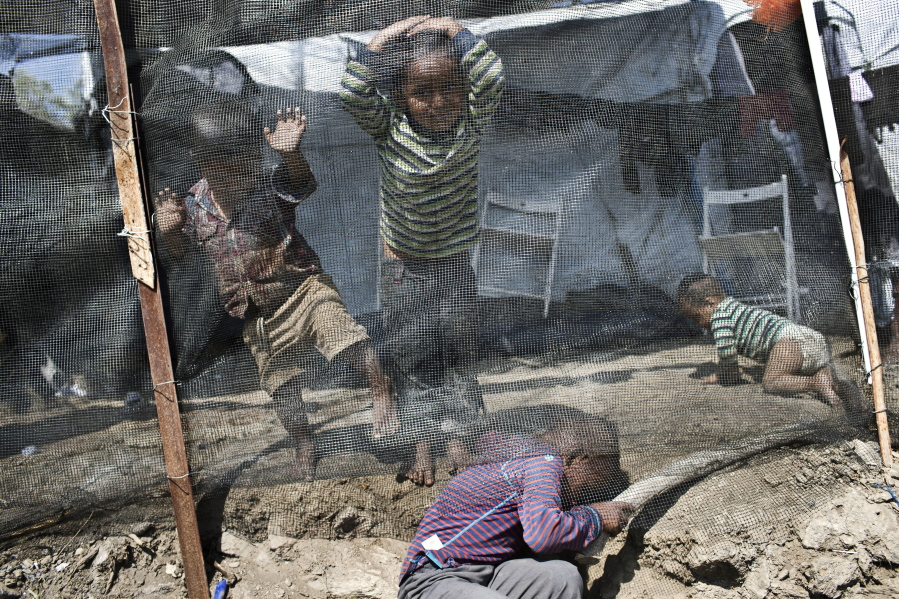One of Europe’s main solutions to migration — Greece’s overcrowded, unsanitary Moria migrant camp — has suicidal children and conditions that a psychiatrist compared to “an old-fashioned mental asylum.”
In another heavily criticized solution to immigration, imprisoned men and women have been shuttled away from one gunbattle only to end up incarcerated on the front line of another, vulnerable to both trafficking and new abuse.
The jammed Moria camp on the Greek island of Lesbos and the dangerous migrant detention centers in Libya serve as a sober reminder to European leaders that their statistical success in curbing migration into the continent has spawned what the U.N. and others condemn as massive humanitarian failures. Deeply divided over how and where to control Europe’s borders, leaders are meeting Wednesday in a summit in Austria.
Migrant sea arrivals to Europe have plummeted this year, but each journey now carries increasing risks of death or indefinite detention in squalid conditions. More than 1,700 people have died on Mediterranean crossings this year.
Abbas Elnaser, an Iraqi who arrived in Moria about three weeks ago, said his 8-year-old daughter’s health had always been frail and she was deteriorating quickly in the camp that was built for 3,100 but now houses more than 9,000.
“She has problems breathing most of the time, she has problems in her lungs,” he said. “The tent is surrounded by garbage.”
In the central Mediterranean, Europe has effectively outsourced sea rescues of migrants to the Libyan coast guard, whose boats have returned 13,000 migrants to Libyan detention centers this year. In some of those centers around the Libyan capital of Tripoli, migrants ended up on the front lines of gun battles as militias fought for control of the city.
At one point in the fighting, detainees abandoned by their jailers for days broke out of at least one center but ended up caught in gun battle. A half-dozen people were shot, according to Ibrahim Younis, head of the Libya mission for the aid group Doctors without Borders.
Libyan officials complain that both they and the migrants have been largely abandoned by Europe.



